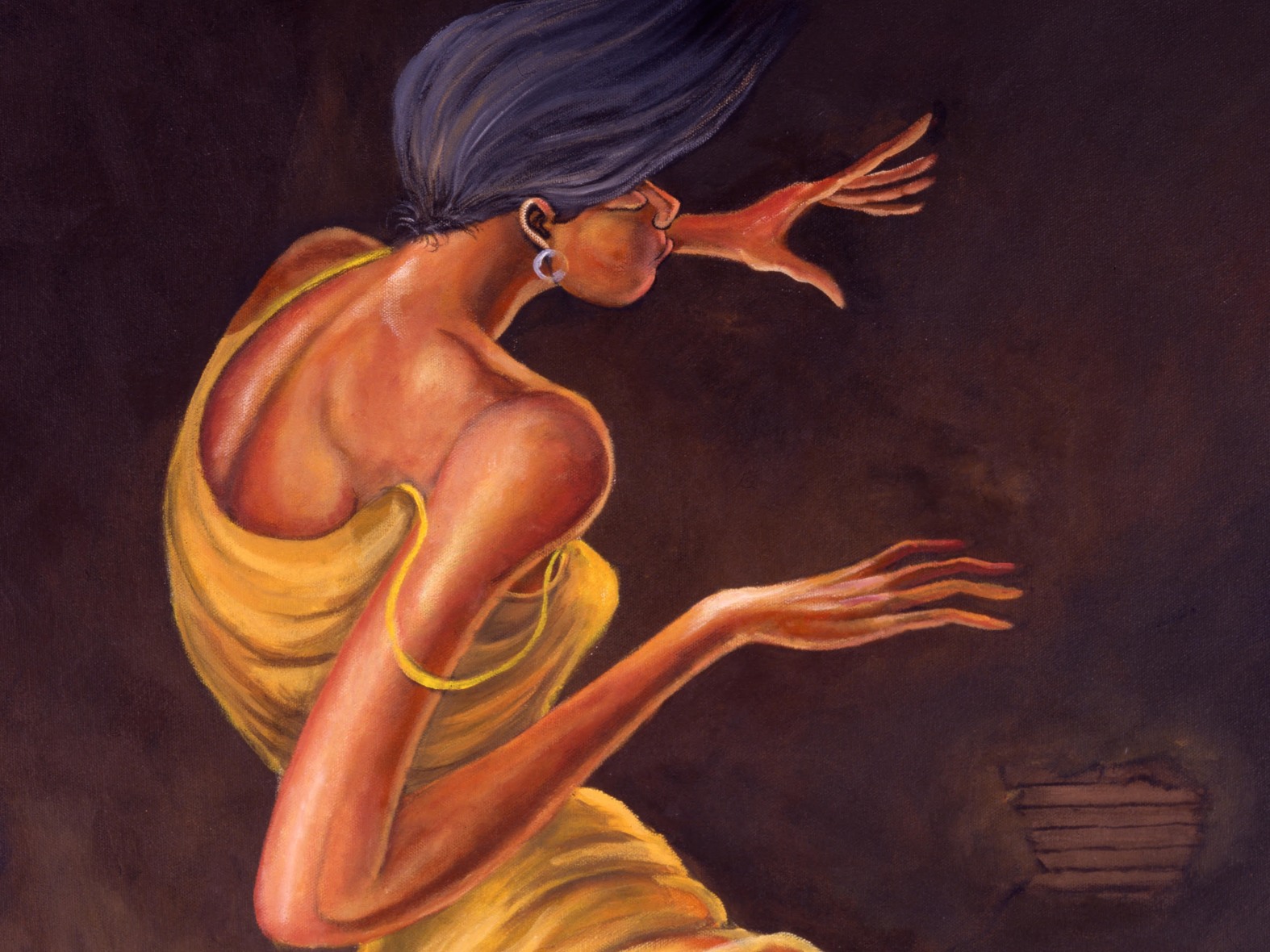
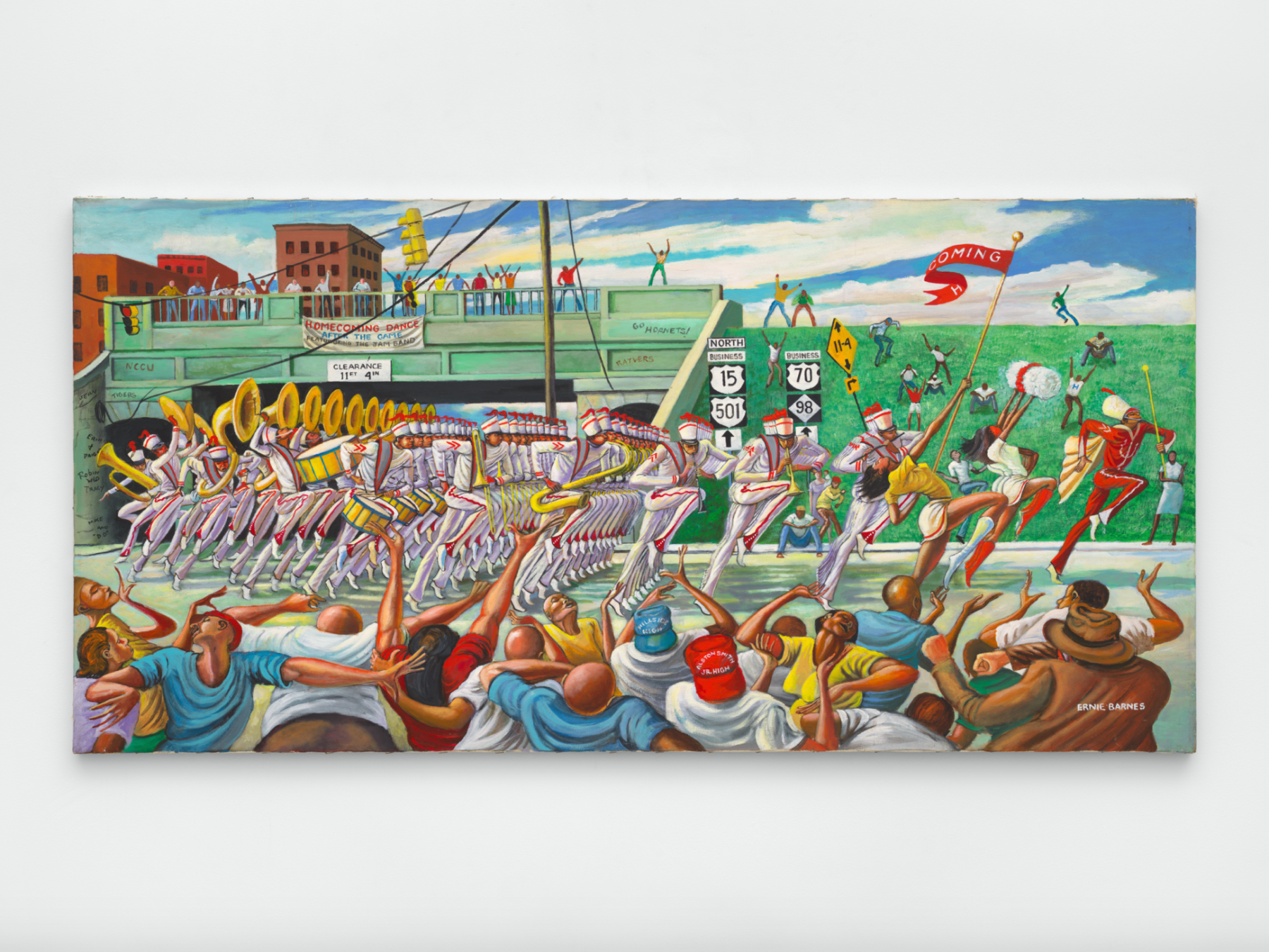
Ernest “Ernie” Barnes (b. 1938–2009) was born in segregated Durham, North Carolina. Raised at the height of Jim Crow racism and racial profiling, Barnes garnered an aesthetic knowledge through the books and catalogues he had access to at the home of his mother’s employer, a prominent Durham attorney. Through these experiences, he would be exposed not only to art history, but to the soul and spirit of the South—what he would come to call the “spiritual currency of the ghetto.” His aptitude for depicting his subjects—ebullient scenes of Black joy and athleticism, and lyrical, Southern life—would evolve into a signature, “neo-mannerist” style of painting. Taking influence from the figuration of the Italian Mannerists, Barnes painted elongated, sinuous figures with closed-eyes and distorted limbs. He also carefully studied 20th century American Masters, including Thomas Hart Benton, Andrew Wyeth, and Charles White. His richly layered compositions showcase his experience as a professional athlete for the NFL as well as the scenes of rural, southern Black life he grew up with: young men playing makeshift basketball with peach-baskets; a swirling mash of sportsmen and their muscled bodies; and rhythm and blues dance halls punctured with people and passion.
Barnes was well ahead of his time socially. Believing that the struggles of poverty offered a depth of meaning not available to most observers, Barnes criticized the stultifying effect that the media had on representations of poor Black youth. His work reflected the social contradictions inherent in the myth of the culturally deprived, Black subject. He committed his work to redressing the dominant paradigm of his era—that Black art was “culturally blind”—into paintings which showcased virtuosity and Black vitality.
Recent solo exhibitions of Barnes’ work include Ernie Barnes: In Rapture, Ortuzar Projects, New York (2024); Ernie Barnes: Where Music and Soul Live, UTA Artist Space, Los Angeles (2023); Ernie Barnes, Andrew Kreps Gallery, organized with Ortuzar Projects, New York (2021); Liberating Humanity from Within, UTA Artists Space, Los Angeles (2020); Ernie Barnes: A Retrospective, California African American Museum, Los Angeles (2019); and The North Carolina Roots of Artist Ernie Barnes, North Carolina Museum of History, Raleigh, North Carolina (2018-2019), among others. His work has been featured in institutional survey exhibitions including Giants: Art from the Dean Collection of Swiss Beatz and Alicia Keys, Brooklyn Museum, New York (2024); Get in the Game: Sports Art, Culture, San Francisco Museum of Modern Art, San Francisco (2024); Dix and the Present, Deichtorhallen Hamburg, Hamburg, Germany (2023); Scrimmage: Football in American Art from The Civil War to The Present, Figge Museum of Art, Davenport, Iowa and Canton Museum of Art, Canton, Ohio (2017), Jordan Schnitzer Museum of Art, Eugene, Oregon (2016), University Art Museum at Colorado State University, Fort Collins, Colorado (2015); Visual Voice, Riverside Art Museum, Riverside, California (2016); I Got Rhythm: Art & Jazz Since 1920, Kunstmuseum Stuttgart, Stuttgart, Germany (2015). Barnes’ work is currently held in the permanent collections of the California African American Museum, Los Angeles; Pro Football Hall of Fame, Canton, Ohio; Brigham Young University Museum of Art, Provo, Utah; North Carolina Central University Art Museum, Durham, North Carolina; and the American Sport Art Museum and Archives, Daphne, Alabama, among others.
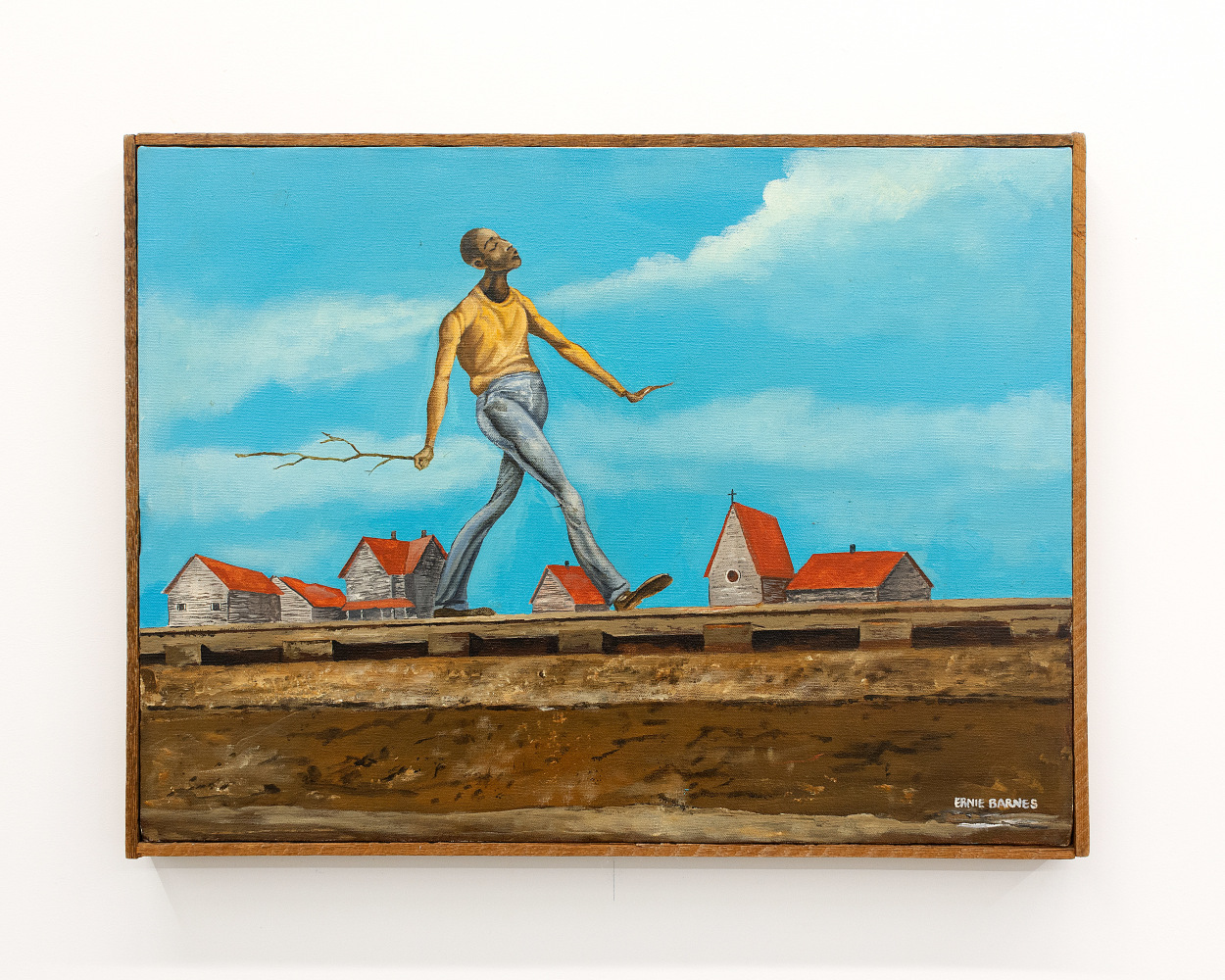
Ernie Barnes, No Time For Chuch, 1972
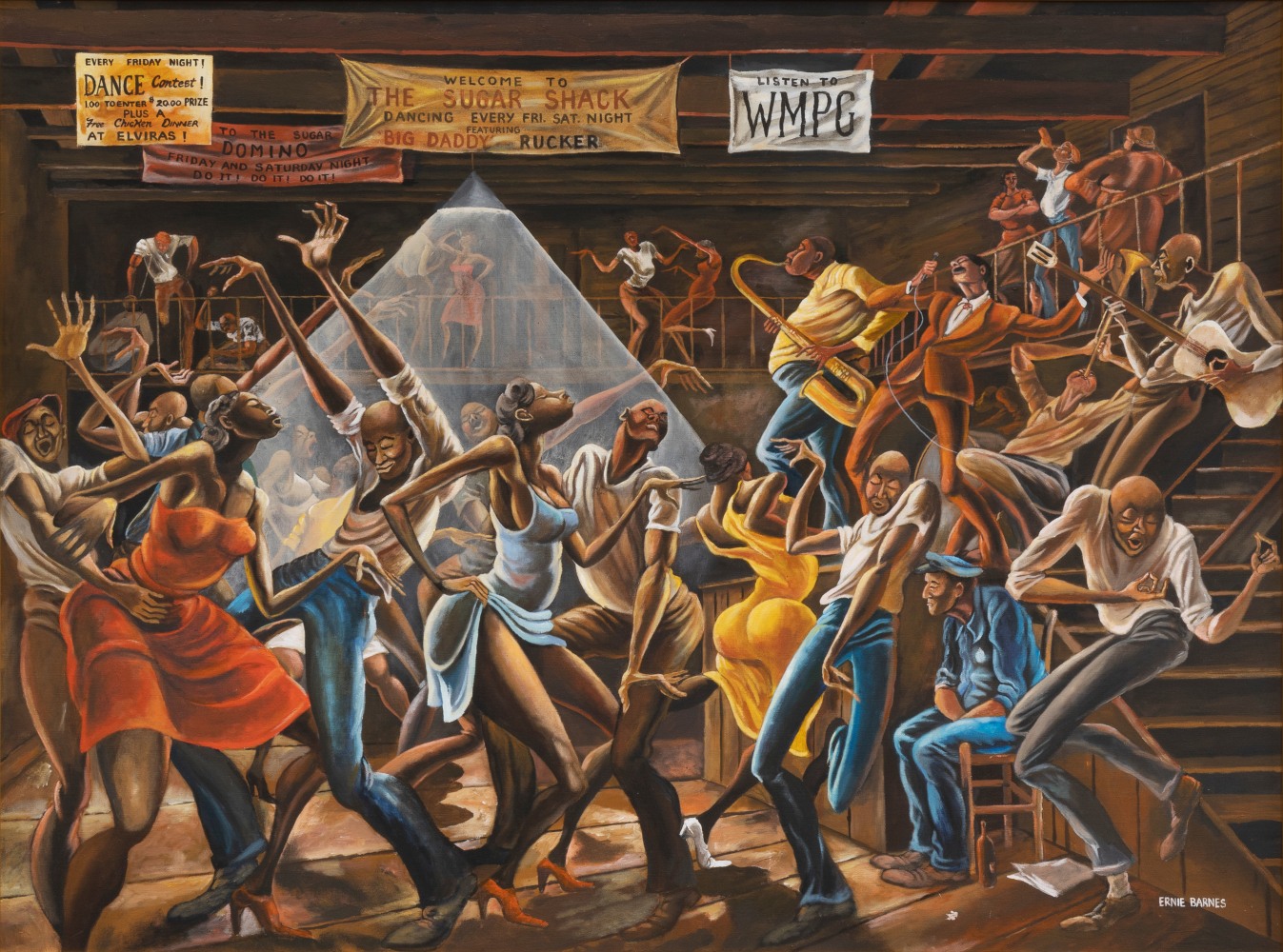
Ernie Barnes, The Sugar Shack, 1976
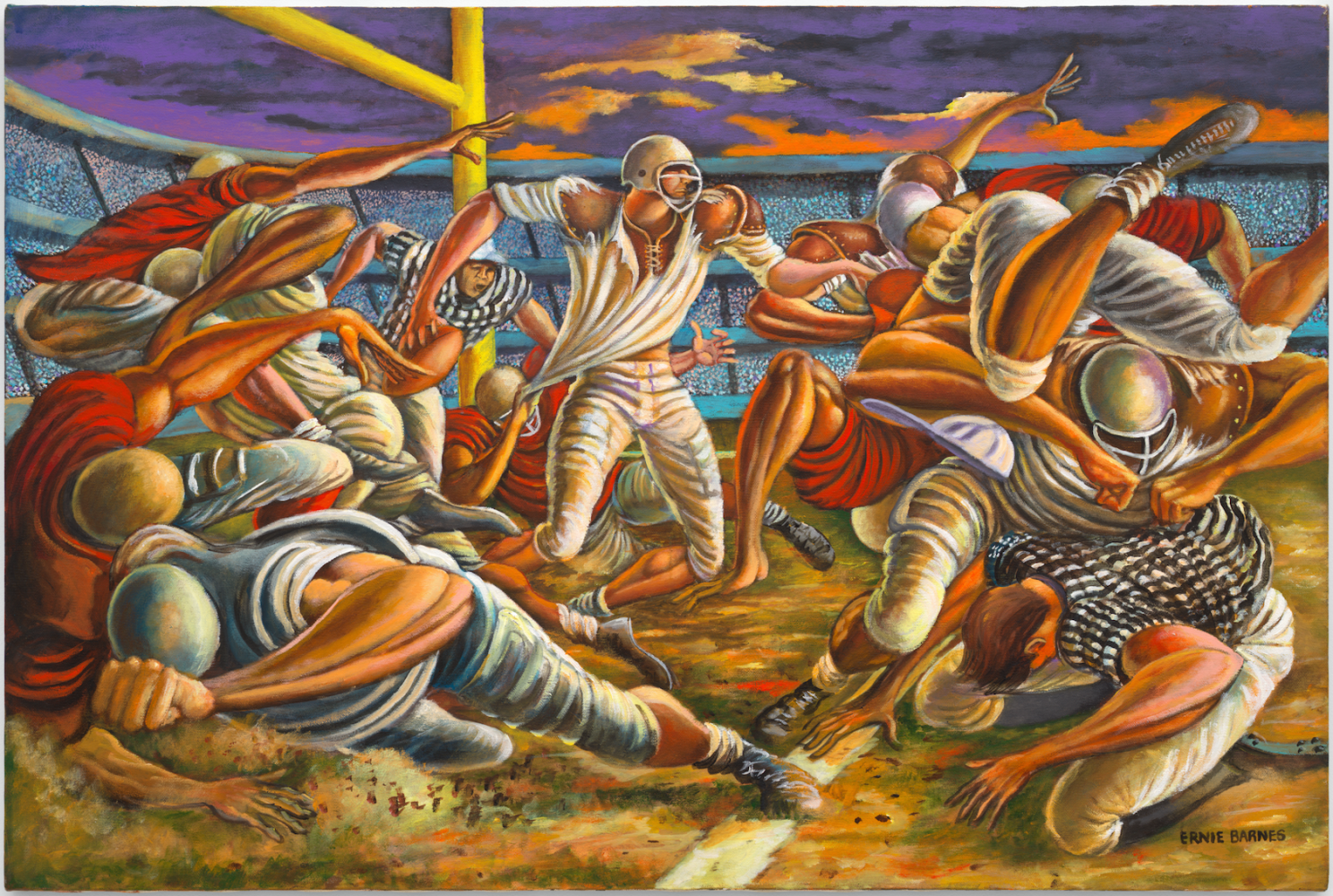
Ernie Barnes, Cool Quarterback, 1991
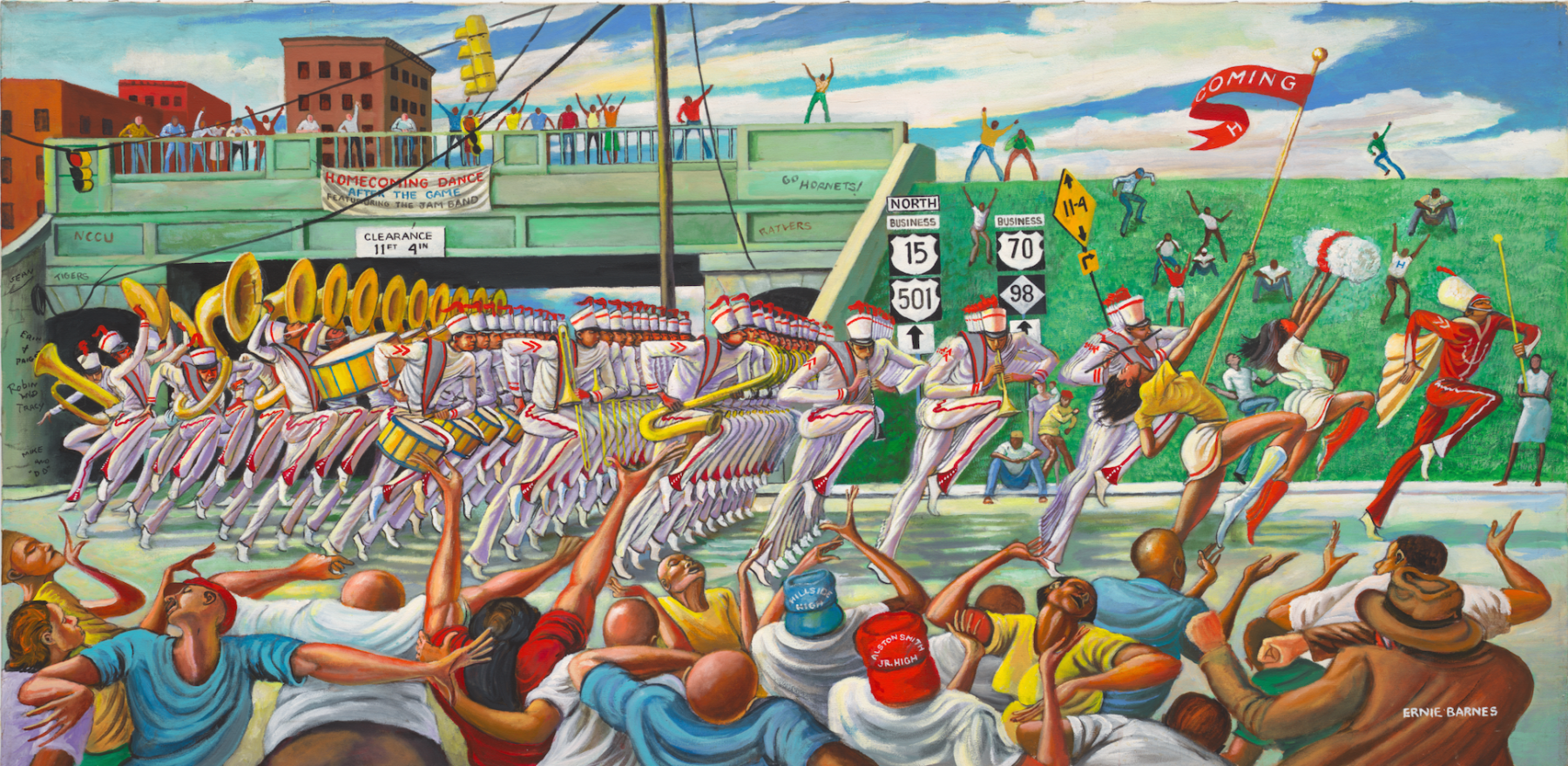
Ernie Barnes, Homecoming, 1994
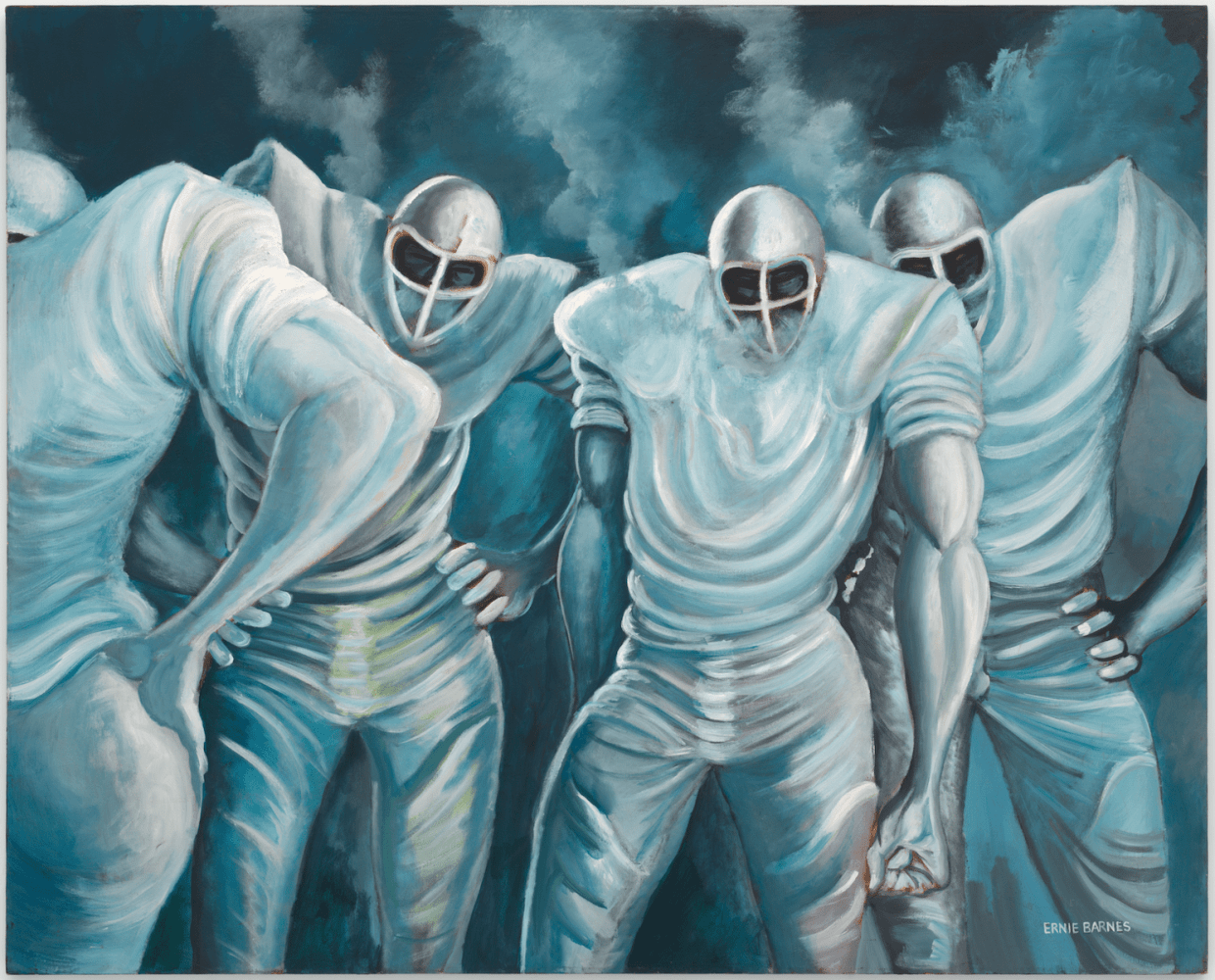
Ernie Barnes, Climactic Conditions, 1995
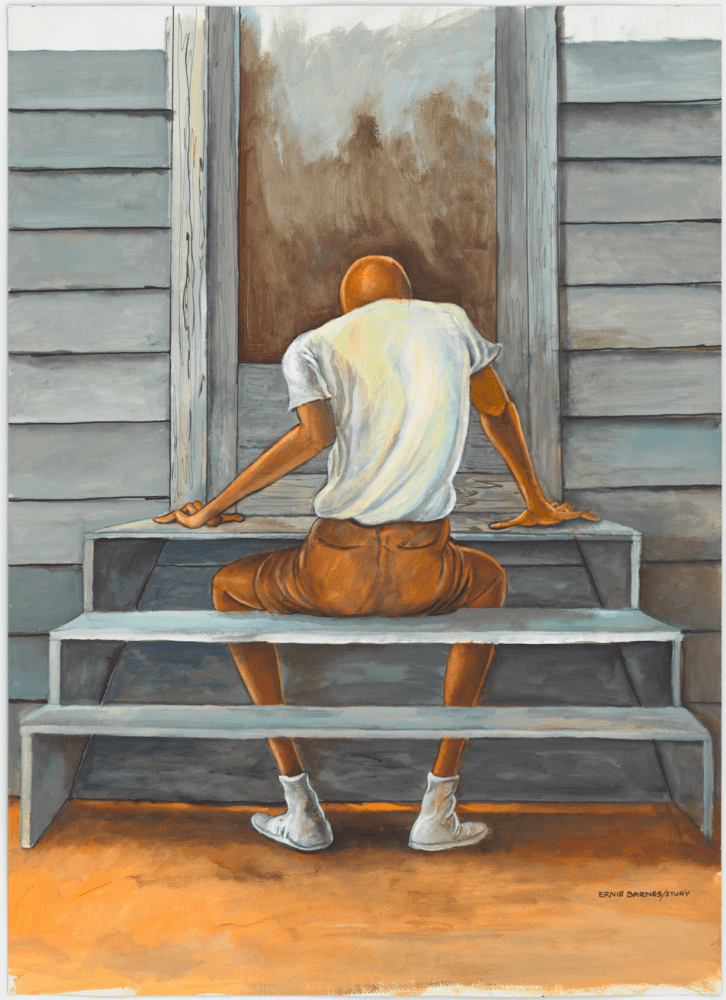
Ernie Barnes, Study for Steps, 1998






